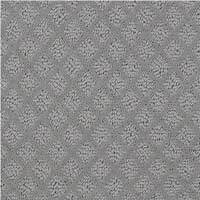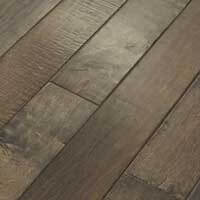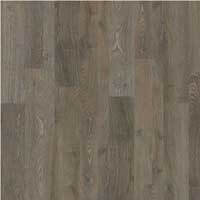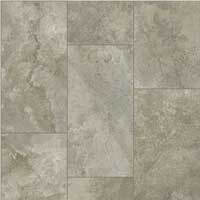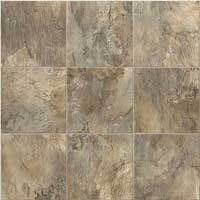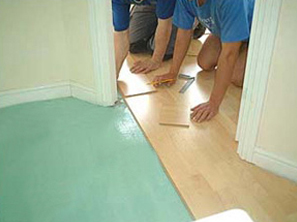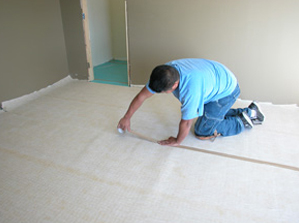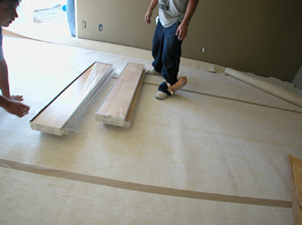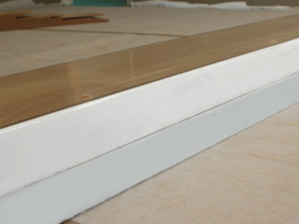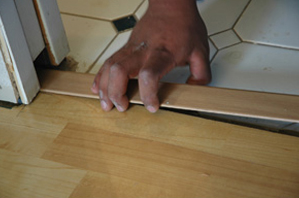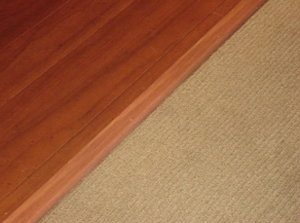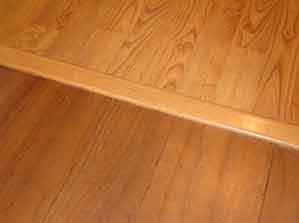Laminate Installation Tips & Preparation
Things worth knowing prior to installation day.
You’ve learned all you need to (Hopefully by visiting our store and this website), shopped smart and made your best purchase decision.
Now we offer two words of advice: be prepared. Get ready for the day your new laminate flooring will arrive for installation.
Being prepared and involved will help insure that the process is done smoothly and efficiently, and, hopefully, eliminate expressions of “I wish I’d remembered to…”.
Knowing what to expect will also be a lot less stressful on you, your family and your home.
Let the pros do the job is our first advice.
Installing this type of floor yourself is difficult work, labor intensive and extremely exacting.
We recommend you call upon a reliable professional to install your laminate floor. That way you can be assured of a beautiful, efficient and correct installation.
However, while installing laminate flooring is a skill that is developed through years of experience, your understanding of the basics of installation will increase your knowledge of the process and enhance your confidence in the professionals working in your home.
We strongly recommend you call upon a reliable, seasoned, dedicated professional to install your laminate floor.
That way you can be assured of a beautiful, efficient and correct installation.
Which is precisely what our goal is for you.
However, while installing laminate flooring is a skill that is developed through training and experience, your understanding of the basics of installation will increase your knowledge of the process and enhance your confidence in the professionals working in your home.
So please allow us to cover some of the basics with you.
Numerous creators, yet a single process.
Today there are many manufacturers producing laminate flooring products.
Most manufacturers have their own specific installation guidelines, however the overall process is the same.
Laminate floors use what is known as a “floating floor” installation. This means the planks or tiles simply lay on top of the floor without being adhered to the subfloor and are only adhered to each other on the edges.
Side seams are either glued together or joined using a “glueless” installation where the planks or tiles tightly interlock together. Both installations are considered floating floors.
First, your floor goes under the glass.
The first step an installer takes when installing a laminate floor is to closely inspect your subfloor for any imperfections.
While no floor is perfectly level, the subfloor should be checked for any noticeable gaps or ridges that could cause problems.
Your floor is then cleaned. The installers will also make sure that the laminate planks or tiles have had sufficient time to acclimate to their new surroundings. Probably by delivering them days ahead of installation.
Understand underlayment, for it’s the next step.
The installers now put down an underlayment directly over your subfloor.
This underlayment allows the floor to expand and contract with changes in temperature and also acts as a sound and moisture barrier. Both good ideas.
In some installations, there are two underlayment layers.
The first layer is installed to specifically act as a moisture barrier while the second layer provides a sound barrier and enhances your flooring’s performance.
The underlayment is typically rolled out and taped together at the seams.
Installers will cut the pieces of underlayment where needed with a precision utility knife to make a perfect fit.
Now your laminate planks or tiles are laid.
Installers will typically begin in the left corner of the area and leave a minimum 1/4" space between the flooring and the perimeter walls.
This is done because the laminate requires space around the edges of the room to expand or contract.
Without that “breathing room” your floor will express its discontent. If the floor is touching or too close to a wall, it can buckle in the middle.
Along the wall, the installers use spacers as they work, to ensure the accuracy of this perimeter space.
They use one spacer for each square foot. Once your floor is fully installed they remove the spacers and cover the perimeter gap with quarter round trim or a wall base.
As the installers lay the planks or tiles in the desired pattern, they will carefully measure and precisely cut them to fit.
Clueless about glueless? Here’s what to know.
As mentioned earlier, many laminates today don’t require glue for the installation.
These glueless products have significantly impacted the laminate flooring industry and there are several reasons why the glueless laminates are so popular.
Most importantly, they are easy to install. The installer simply puts down an underlayment and the laminate interlock to each other one at a time.
If something goes wrong during installation, your floor can be dismantled plank by plank, or tile by tile, and re-built.
If one of the planks gets damaged after installation, your entire floor can be removed, the damaged plank replaced, and the floor can be put back together again.
Understand that some floors need glue.
For floors that require glue on the sides of the planks or tiles, the installers begin by gluing the first two panels in the first row together.
Again, they start in the left-hand corner and glue the first row together at the ends.
As they glue each plank or tile they apply clamps or use straps to hold the pieces together.
Although planks or tiles usually fit together easily, installers will sometimes use a tapping block while fitting the boards together.
For installations that use glue, once the floor is completed and the glue is dry, installers then remove the spacers.
To finish your floor, the installers add molding to cover the perimeter gap and install any additional transition trim pieces needed in doorways or where the laminate meets a different type of flooring.
Custom finished moldings and trim will give your laminate flooring a beautiful, finished look. They are all coordinated to match or accentuate the design of your floor. It’s all part of a professional installation.
For your knowledge, here are some finishing terms and definitions.
Reducer Strip is used to create a smooth transition between two floors of different heights, as well as protect the plank or tile exposed edges from damage caused by foot traffic.
Overlapping Stair Nosing is similar to a flush stair nosing except the nosing overlaps the exposed edge of your floor.
The overlapping stair nosing is secured to the subfloor and not to the laminate floor so the floor is free to move. Recall the “floating floor” idea we mentioned earlier in this section.
T-Molding is used to bridge two areas of flooring that are the exact same height.
The T-Molding overlaps the exposed edges of the floor and is secured only to the subfloor, never to the flooring itself.
Generally this trim is used as the transition piece between rooms, or as the expansion piece for areas that exceed 30 feet in length.
Universal Edge is also called a Square Nosing and is used where the laminate flooring butts up to carpeting, or various vertical surfaces where the edge will be exposed, such as along a fireplace.
Quarter Round gives the floor a finished look and protects the edges of your laminate flooring.
The result is a beautiful, professionally installed laminate floor.
What to know and do before installation day
Furniture is the first step.
Remove all furniture and other objects and materials from the areas where the installation will take place. Some installers will move your furniture, but there may be an additional charge for doing so.
Before moving, you’ll also need to empty the contents of china cabinets, closets and the like.
Be aware that the area of installation must be climate controlled (heated or air conditioned). Indoor humidity should be maintained between 45-65%.
What about your old floor covering?
Please consider how your old floor covering will be taken up and disposed of. This can be a time consuming task. We recommend that you check with us about the cost and the method of disposal.
If you prefer to remove your present floor covering, do it at least one day prior to arrival of your laminate product to allow for cleanup and floor preparation. If removing old carpet, please leave tack strips in place and pull the staples out of the floor from the original pad.
Know what to do with your trim.
In many cases, moldings and baseboards need to be removed for laminate installation. Your installer may do this but at an additional charge and they will probably not be responsible for damage or breakage due to dry or brittle wood.
Painted baseboards, woodwork and paint may need retouching after the installation is complete. If necessary, this is your responsibility.
Subflooring is next.
Your existing subfloor may need to be prepared to receive the laminate, or a new subfloor may be required. We suggest you discuss this with us and, if subfloor work is necessary, that it be done by qualified professionals. It is important that the subfloor be as clean and level as possible.
Doors need your attention.
When laminate is installed, there’s always the possibility that the doors, especially closet doors, basement and bedroom doors, may not clear the new laminate and swing free.
Some installers will remove doors in order to install the laminate and re-hang them if possible. They probably won’t shave or cut down doors to insure clearance. You should check with us as to their policy and the cost. You may need to arrange for a qualified carpenter to provide this service after the installation of your new laminate floor.
Follow-up on the clean-up.
Installing new laminate will produce waste.
Usually these materials are collected by your installer and left at your trash collection site. Check with us before the day of installation so you’re clear about the clean up, if there are added costs to do so, and ask about the plan for laminate remnants.
What to know and do during installation day
Installation day is a stay at home day.
Be prepared to be at home the day of installation and be available in case the installation crew has questions. Your presence will insure that the correct laminate is installed in the right areas. Because it is difficult to estimate the length and circumstances of each job, some installers may not be able to give you an exact time of arrival. We will keep you updated on the installer’s schedule.
Your safety is top priority.
Your installers will use a variety of tools and techniques that can make the work area hazardous. Please make sure that your children and pets are kept out of the work area on installation day.
The walk-thru is a key step.
We recommend that, prior to the completion of the installation, you walk thru the job with the chief installer. This will give you the opportunity to ask questions and be clear on any final details.
What to know and do after installation day
Air on the healthy side.
If you are sensitive to dust and odors, good ventilation should be established for 48 to 72 hours after installation.
Be in the know by having a plan.
Being prepared for installation day through careful planning and smart preparing will make your life and the installers a lot easier. It will also make your laminate flooring experience enjoyable right from day one.


